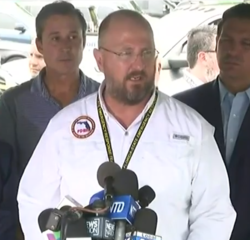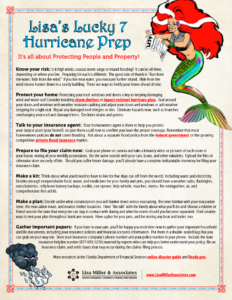Supply chain delays could slow response
![]() This has certainly been an unusually quiet Atlantic hurricane season so far, with no named storms in August for only the third time since 1950. We finally had the short-lived Hurricane Danielle in the Northern Atlantic going into this past holiday weekend followed by Tropical Storm Earl, which is still hanging around the Caribbean this morning. But as we enter the heart of hurricane season that runs now through mid-October, there’s concern that the nationwide supply chain delays could slow any storm response and recovery.
This has certainly been an unusually quiet Atlantic hurricane season so far, with no named storms in August for only the third time since 1950. We finally had the short-lived Hurricane Danielle in the Northern Atlantic going into this past holiday weekend followed by Tropical Storm Earl, which is still hanging around the Caribbean this morning. But as we enter the heart of hurricane season that runs now through mid-October, there’s concern that the nationwide supply chain delays could slow any storm response and recovery.

Kevin Guthrie, Florida Emergency Management Director
Florida’s Emergency Management Director Kevin Guthrie said at a recent conference that supply chain issues are becoming more of a problem, specifically in getting power restored should it go out. “After the first incident in the country, there will be a supply chain problem,” he was quoted by the Miami Herald. “They will be able to get the power restored, but there are certain businesses or neighborhoods that may be on a generator power for months to years. That’s going to be problematic.”
Despite the slow start to the season, AccuWeather’s updated outlook still has a high chance for high-impact hurricanes now through the official end of hurricane season on November 30. “If one of these systems gets into the Gulf of Mexico, watch out,” said Dan Kottlowski, their top hurricane expert.

The miles of devastation in Miami-Dade County from Hurricane Andrew. Courtesy, FEMA
This past August 24 marked the 30th anniversary of Hurricane Andrew striking South Florida. The Cat 5 storm killed 43 Floridians, destroyed 50,000 homes, and damaged about 100,000 others, with added death and damage into the Southeast. It was the costliest storm in U.S. history at the time. Global reinsurer Swiss Re estimates a current-day Andrew would cost the state four times what it did in 1992: $120 billion, at least half of that in insurance costs, given coastal population growth and development.
While Florida learned a valuable lesson from Andrew and enacted a statewide building code that is still the model for other states, our former Emergency Management Director Craig Fugate, who went on to run FEMA for eight years, recently wrote in The Hill that the country hasn’t learned the same lesson.
“When disasters strike communities with strong and modern building codes, people have homes to come back to. Where codes are weak, we lose lives and livelihoods, especially in low income and minority communities. Storms tear apart the fabric of towns and can decimate local economies for years or even decades,” wrote Fugate. He rightly points out that the cost involved in tougher codes provides a 6:1 return on investment through savings on insurance, repairs, and real estate value.
September is National Preparedness Month, so please encourage your family, friends, and clients to visit Ready.gov. I’m happy to share again our link to Lisa’s Lucky 7 Hurricane Season Prep! On the supply chain issues, we look forward to dialogue with you our readers on how we can overcome this challenge as part of the necessary planning for storm response and recovery. Our federal partners, FEMA and the Army Corps of Engineers, are faced with the same challenges as the insurance industry. They are using many of the same suppliers of materials and labor. We’re happy to assist those with further questions.
LMA Newsletter of 9-6-22


